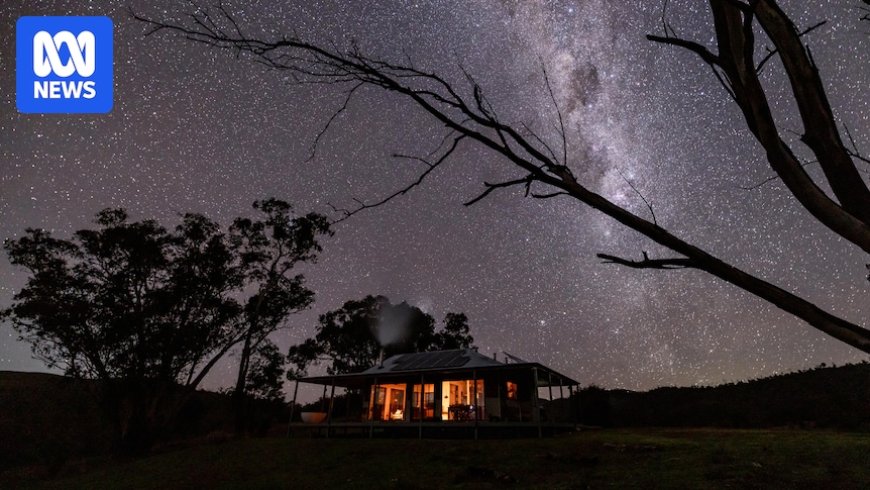Kestrel Nest: Australia's First 'Dark-Sky' Accommodation
Kestrel Nest EcoHut in New South Wales is now internationally recognized as a 'dark-sky' lodging, attracting a surge in bookings. DarkSky International certifies areas with minimal light pollution, promoting astro-tourism and conservation of the night sky.

A venue in southern New South Wales has become the first lodging in Australia to be internationally recognised as 'dark-sky' accommodation, sparking hopes of a new tourism boom.
The Kestrel Nest EcoHut, in the state's Snowy Mountains, has been identified by DarkSky International as a place with little light pollution and a clear night sky.
Owner Louise Freckelton had seen a spike in bookings since the recognition, with patrons indicating they booked because of it.
Louise Freckelton says she has seen an increase in bookings since the eco-hut received the recognition. 'The way the bookings came in was very fast and much faster than the way bookings normally come in,' she said. 'We are hoping that it will increase … understanding of why dark skies are really important.'
Ms Freckelton said the recognition attracted a range of people 'from the ordinary, everyday traveller right through to really niche markets'. 'You get people who are really into finding out what astro-phenomenon is happening at the time,' she said.
DarkSky International is a not-for-profit organisation that certifies areas that preserve and protect dark sites through lighting policies and education. More than 200 places across the world are DarkSky-certified, including the Warrumbungles and the Murray River. But there are only nine certified temporary-accommodation sites, and just two in the South Hemisphere: Kestrel Nest and a lodging in Brazil.
DarkSky communications manager Drew Reagan said the lodging program started just over a year ago, due to the rise of astro-tourism. 'Astro-tourism is really any tourism that brings people out to recreate in these dark-sky places,' he said. Mr Reagan said Australia had great potential to capitalise on the growing market. 'Eighty per cent of the world's population lives in light-polluted areas,' he said. 'Many children grow up never having seen the Milky Way at all, so people are being drawn to these dark places.'
The eco-hut is close to several regional communities, including Gundagai and Tumut, which could potentially benefit from flow-on effects. Ms Freckelton said she encouraged visitors to 'engage with other towns and other activities in the area'. 'As part of the information we give to guests before they come, we highlight different things they might like to do,' she said.
Ms Freckelton said her venue had to meet a certain threshold of low light pollution when applying for the certification, so she completed an inventory of lighting both in and around the hut. 'We had unwittingly already met those requirements about having warm light, about having light when it is only necessary, not having excess lighting,' she said. A Habitat Identification report also required the identification of species and insects living or migrating through a 2-kilometre vicinity of the site. 'Nocturnal creatures like owls and bats are affected by light pollution. Their hunting and feeding and so on is distracted by too much light,' Ms Freckelton said.
Tumut photographer Grant Hardwick said night-time photography could easily be affected by light pollution, resulting in overexposed highlights or shadows. 'You're taking it over a long period of time, you're allowing the light to come into the camera,' he said. 'So if there's a house or a car or a truck or something moving past in the distance, that's going to be captured.'
Michael Maher, a volunteer at the Rock Regional Observatory near Wagga Wagga, is also no fan of big cities and bright lights. 'The further you go away from the city, the better it is,' he said. 'The Milky Way … disappears immediately with light pollution. 'In big city areas and with a lot of development around, you really have to go looking for it.'
According to the source: Australian Broadcasting Corporation.
What's Your Reaction?
 Like
0
Like
0
 Dislike
0
Dislike
0
 Love
0
Love
0
 Funny
0
Funny
0
 Angry
0
Angry
0
 Sad
0
Sad
0
 Wow
0
Wow
0














































































































































































